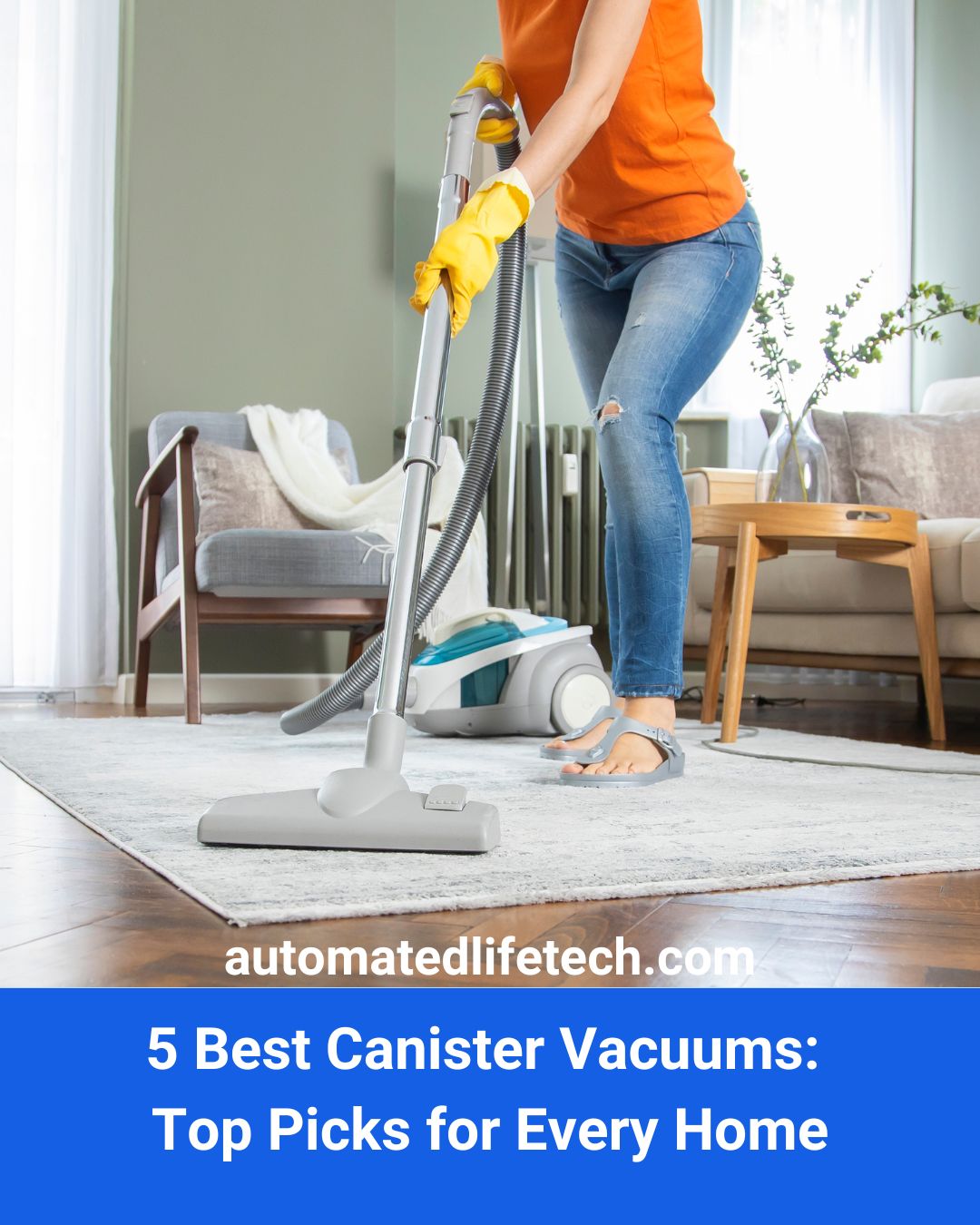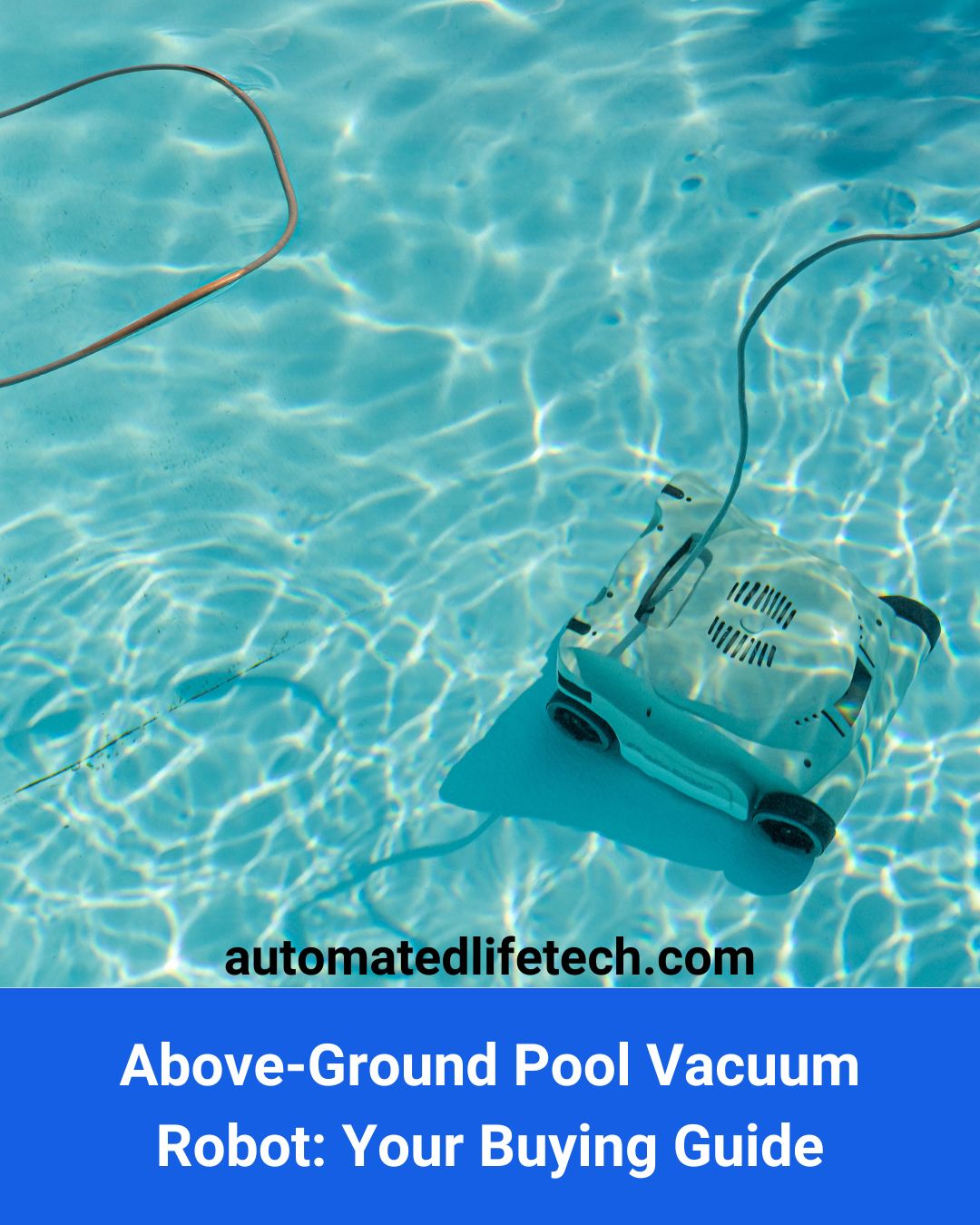Quiet robot vacuum cleaners provide plenty of benefits to those who are looking to immediately improve their environment and productivity. But choosing the right vacuum for the job is never just about noise level. You would also want to have as much suction power as possible and an excellent filtration system for general health and safety. Thankfully, vacuum cleaners no longer compromise too much on other features just to achieve desirable noise levels. The choices have never been better! The challenge now is narrowing them down based on the type of unit you need or prefer.
Read here to find out about the quiestest robot vacuum.
If you are interested in the best robot mop and vacuum, read here.
What are the Different Types of Vacuum?
If you are on the lookout for a new vacuum cleaner, it is important to consider that the equipment comes in various types, each suited for different cleaning preferences. Here’s an overview of the most common types of vacuums:
Upright Vacuums
Upright vacuum cleaners are considered the traditional type of vacuums, with the motor and suction head converging in one unit. These models also have a rotating brush to loosen and separate dirt from carpeted surfaces, where it’s most recommended. Notably, these units can have powerful suction, but are more challenging to store due to their size.
Read here for the best upright vacuums.
Canister Vacuums
This type of vacuum has a separate canister unit attached to a wand and cleaning head via a flexible hose. These models are generally more versatile than upright vacuums, which makes them slightly more suitable for cleaning under low-clearance spots and tight spaces.
Stick Vacuums
True to their name, stick vacuums are lightweight and slim. They are convenient for general cleaning and quick cleanup since they are cordless and easier to maneuver, especially on hardwood floors. The downside? These units tend to have limited suction power compared to larger and traditional models.
Handheld Vacuums
Handheld vacuums are designed for cleaning small spaces, upholstery, car interiors and other hard-to-reach areas. They are compact and portable, often powered by batteries for easy maneuverability. They have limited power and are reserved for spot cleaning and handling spills.
Robot Vacuums
Robot vacuums are autonomous cleaners that use various navigation sensors to detect dirt and obstacles as well as map out the most efficient cleaning route by themselves. These units don’t come as powerful as traditional vacuums but are convenient for maintaining cleanliness with minimal effort. Typically, this cordless vacuum is also designed with mopping capabilities and self-cleaning options.
Read here for more information on the quietest robot vacuums.
Quietest Upright Vacuum: BISSELL CleanView Swivel (70 dB)
Upright and canister-type vacuum cleaners often come with strong suction at the expense of loud noise. But we did find BISSELL CleanView Swivel one of the most suitable options for anyone wanting a powerful vacuum with low noise impact. The unit also comes with dedicated pet tools, which allow the vacuum to reach debris and pet hair from what are typically hard-to-reach places for upright variants.
Quietest Canister Vacuum: Miele Complete C3 Marin (60 dB)
Miele C3 Marin is one of the quietest vacuums you’ll find in the market—even more so in the canister vacuum ranks. We find it best on hard floors but it also does an admirable job in basic low-pile carpeting and deep cleaning tasks. Additionally, it works surprisingly well on pet hair! But alas, the most satisfying thing about C3 Marin it gets as quiet as 60 dB. By comparison, most canister vacuums we’ve tested hover around 65 dB to 70 dB on average use.
Quietest Stick Vacuum: Wyze Cordless Vacuum (65 dB)
We have the Wyze Cordless Vacuum as our best-in-class cordless stick vacuum cleaner. It’s quiet operation or ECO mode registers about 65 dB noise level, which allows you to have conversations at a level voice even as you roam. It’s reliable on bare floors and in cleaning pet hair, although we were underwhelmed by how fast the battery gets drained on standard use. But overall, we love it as a budget-friendly option that packs a powerful performance minus a constant distracting “vacuum noise.”
Quietest Robot Vacuum: SwitchBot Mini Robot Vacuum K10+ (48 dB)
We have the compact SwitchBot Mini Robot Vacuum K10+ as the smallest and quietest robot vacuum on our list. Even better, it’s no slouch with LiDAR navigation sensor and a proper 2,500 Pa max suction power that is enough for most household assignments. All things considered, we find it most suitable for apartments and average-sized rooms with tiles or hardwood flooring and simple floor plans.
Quietest Handheld Cordless Vacuum: UMLo H6 Handheld Vacuum (65 dB)
Handheld vacuums get surprisingly loud a times, though the UMLo H6 Handheld Vacuum remains reasonable at just 65 dB. We find this incredibly lightweight unit best for furniture, car interiors and other tight spaces. As a bonus, it cleans after pet hair just fine and is one of the most aesthetically pleasing vacuum cleaners we’ve tested to date.
Most Quiet Vacuum FAQ
What is the Most Silent Vacuum?
The quietest vacuum we’ve tested that is also worth recommending is the SwitchBot Mini Robot Vacuum K10+ at just 48 dB. On that note, it’s important to consider that each type of vacuum cleaner corresponds to different needs and environments. Thus, selecting the optimal vacuum for your place is rarely as simple as choosing a quieter model.
Do Quiet Vacuums Exist?
Quiet units are available for each type of vacuum cleaner. However, it must be noted that it’s not efficient to compare one type of vacuum against another when it comes to noise levels since these equipment serves different purposes.
Handheld vacuums are quieter than traditional vacuum cleaners, but they have limited storage space and suction power. Regardless, it doesn’t hold them back from being superior in cleaning tighter spaces and hard-to-reach areas.
Which Vacuum Cleaner Has Less Noise?
Most brands make vacuum cleaners with varying suction power, noise levels and added features. But a robot vacuum cleaner tends to be the one with more options for quiet vacuums since they are predominantly designed for confined spaces and households.
How Many dB is a Quiet Vacuum Cleaner?
As a reminder, being constantly exposed to noise levels of 85 dB and above can cause permanent hearing loss. With that said, normal conversations are usually at 60 dB, while vacuums are on the same spectrum as light traffic and washing machines, which all generate 70 dB on average.
Since vacuum cleaners can still go 80 dB and above, we’re putting vacuums that can work at 70 dB or below as quiet vacuum cleaners, while those going below 60 dB are silent. These are optimal choices if you want to minimize distraction and noise in your premises and if losing out on suction power will not be that big of a concern.
Why Choose Quiet Vacuum Cleaners?
Quiet vacuum cleaners bring incredible upsides for both households and commercial spaces. This equipment makes it possible to clean at any time of the day without causing disturbance to others or interrupting noise-sensitive activities. Therefore, if reducing noise pollution is chief among your priorities, then you’ll likely find this short list very helpful as you find the quietest and most efficient vacuum cleaner for your specific needs and preferences.
Enjoy Serene Cleaning with a Quiet Vacuum
Buyers look for quiet vacuum cleaners for a variety of reasons. But a large part of it is often about having less distraction at work, home or both if your projects are being done in the same space. Luckily, more manufacturers seem to be more mindful of noise impact these days, as seen in the increase of vacuum cleaners that are hovering around the 60 dB to 89 dB range, which is right around the same level that conversations produce. With that said, getting a vacuum cleaner below 70 dB will give you more flexibility since this is the volume that tends to stay in the background and doesn’t get take us out of our focus, rest or conversations.
Interested in above ground robot vacuum? Read here.












